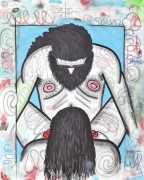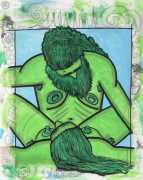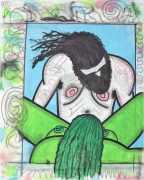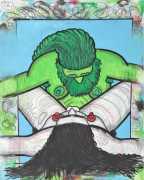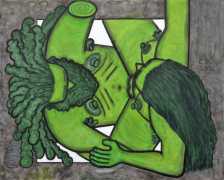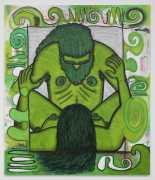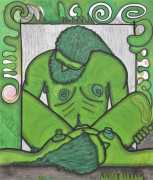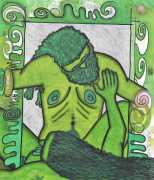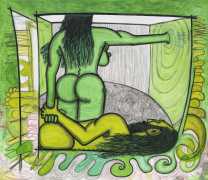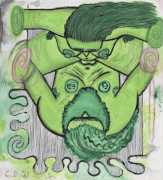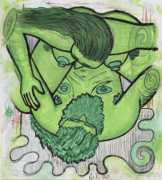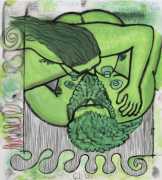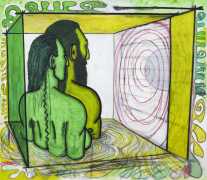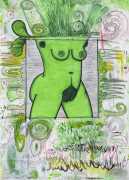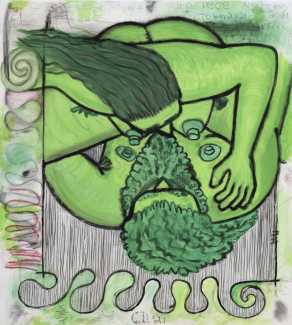
Dunham’s collective title for most of these paintings, Qualiascope, suggests something about the parts creating a synthesis both artistically and sexually, though he does like to use titles in a deliberately enigmatic way. He says of this series, exhibited at the Eva Presenhuber Gallery in Zürich in 2022, ‘It’s been in my mind for years, but it’s the first time I’ve ever figured out how to make paintings work that had males and females together in the same paintings. They appear to be copulating, so there’s something for them to do together. It took me years to imagine a way that I could work with a subject like this without it being gratuitously sensationalistic. That’s the way it goes with painting for me. It just takes a long time for things to come about.’
Asked why his characters in Qualiascope are green, Dunham explains ‘I’ve read science fiction my whole life, and green humanoids are ubiquitous in that tradition for all kinds of reasons. It just seemed like a rich associative area. I had been thinking about an image I had doodled of people copulating, thinking it was a beautiful structure for a painting, and also because it was unavoidable that one would read it as that but it also was extremely chaste. There was no representation of genitals, just a beast with two backs, an idea of people together. And then in my imagining it came together. I started out making drawings of this image of people in a sexual embrace that were green, and it triggered a whole set of fantasies. What if somehow green people did turn up from another planet, or another dimension, or hiding in the jungle in New Guinea? What would that be like? And I realised it would be like when white European culture hit the civilisations then seen as aliens. It destroyed them, studied them to death, turned them into resources. It’s not a coherent narrative premise, it’s more a set of fantasies and associations that made me feel like it was a pretty rich area for me to pursue. It’s funny, because the sorts of things that I think about now are much more like stories than they’ve ever been before. Green people discovered, studied within an inch of their life, their love for each other reduced to some sort of clinical data set. That sounds like a science fiction novella, but that’s not something I’m going to write. It’s just an art that I seem to be making.’


